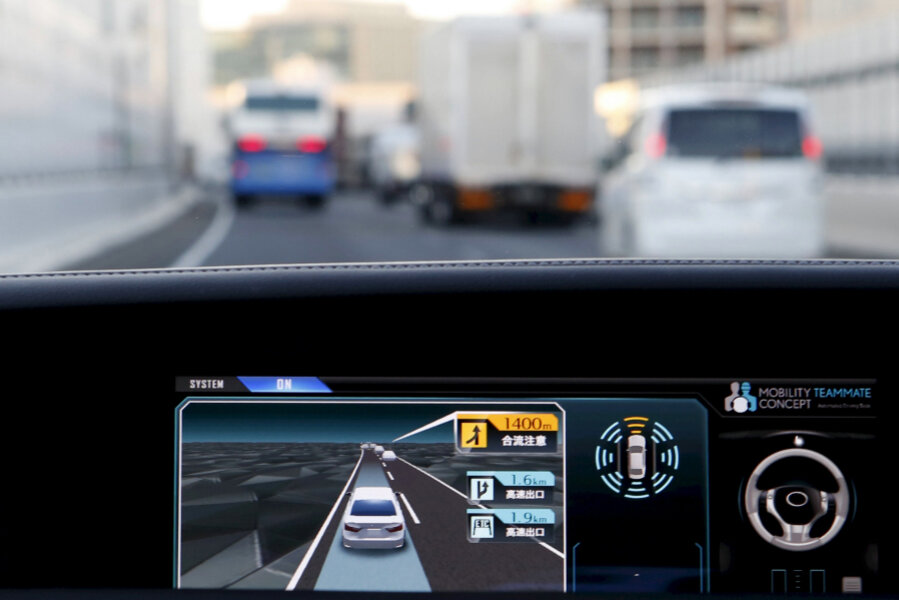To test self-driving tech, automakers built a fake city in Michigan
Loading...
Mcity, a 32-acre town located in Ann Arbor, Mich., has storefronts, stoplights, and pedestrian crossings. Cars cruise up and down the streets – but the town has no permanent residents.
The metropolis is essentially a movie set, albeit a very expensive one, built at a cost of $10 million by automakers, the University of Michigan, and the state Department of Transportation to test self-driving cars.
Think of it as a mid-way point between small closed courses and public roadways. At Mcity, automakers can refine cars’ sensors and software by seeing how they react to successions of hazards such as confusing signs, lane shifts, and sudden obstacles, all without putting lives at risk.
Mcity “allows us to be maximally evil to the technology we’re testing,” University of Michigan engineering professor Ryan Eustice told USA Today.
Ford announced on Friday that it will be the first automaker to test its self-driving cars at Mcity. The test facility was completed in July, but until now it’s been used only by students and companies that want to offer third-party technology for self-driving cars. Ford, which has been researching self-driving tech for more than 10 years, will run a fleet of self-driving Fusion sedans through Mcity’s streets regularly in order to improve the cars’ software and sensors so they’ll be more mature by the time they hit public roadways.
Over the next few months, Mcity will offer an additional challenge to self-driving cars: Michigan winters. Snow and fog can throw off a car’s radar, lasers, and cameras by removing depth perception. Automotive software needs to be able to handle these weather conditions, so self-driving cars don’t get confused every time a flurry comes down. In addition, a harsh winter might cause Mcity to develop potholes, snowbanks, and road debris – more obstacles a self-driving car would probably encounter in the real world.
Ford isn’t going to stop developing driver-assist technology, such as automatic parallel parking and blind-spot monitoring – but it wants to get to the point where it can produce fully autonomous cars. Tests at Mcity are designed to help Ford reach Level 4 on the National Highway Traffic Safety Administration’s autonomy scale, which means that a car can handle all aspects of driving on its own, with human involvement purely optional. That’s the approach Google, which has been building self-driving cars since 2008, is taking as well. A Level 3 car, such as Tesla’s Model S equipped with AutoPilot software, can handle most driving decisions but will hand control back over to the human driver if it encounters conditions it doesn’t know how to deal with.








